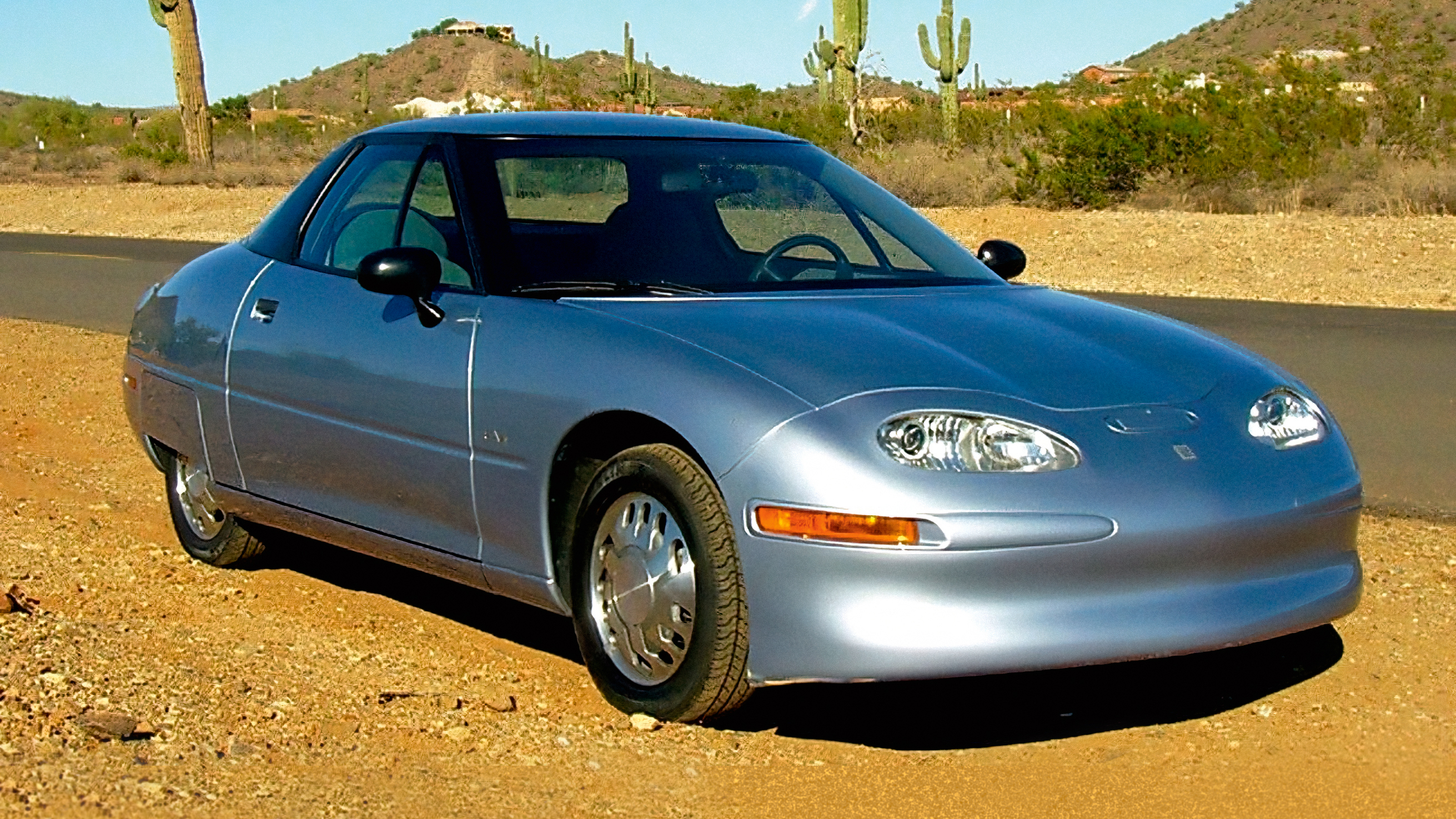
In issue one of T3, we reported on the release of the EV1, a fully electric car from General Motors, one of America largest automobile manufacturers. The sleek two-door, two-seater is generally regarded as the first mass-produced EV available to the public. It had a 0-60 time of around 8.4 seconds and a range of between 70 and 100 miles – and up to 140 miles for the second generation model. (BMW’s i3 will only do around 150 and that was released in 2013.)
Despite an overwhelmingly positive response (including endorsements from the likes of Tom Hanks, Danny DeVito and Mel Gibson) only 1,117 cars were made, and in 2002 GM decided to recall them all and crush the lot, in spite of a vociferous ‘Don’t Crush’ campaign.
GM suggested that it simply couldn’t sell enough to make the project financially viable. However, there is evidence that it had a waiting list of thousands of people willing to lease or purchase the car outright. An independent study also found the consumer market for EVs amounted to between 150,000 and 225,000 annual sales: a solid enough base on which to launch a successful business.
Concerns about setting up a parts and supply infrastructure, plus a mixture of incoming regulations and pressure from the George W Bush administration and US oil companies saw GM effectively sabotage and kill its own electric car.
The EV1 launched in 1996, with the improved model II appearing in 1999. But instead of losing interest – or being pressured out of the market – let’s imagine GM stuck with it…
Get 3 issues of T3 for just £3 today!
Get every new issue of the UK's best-selling gadget magazine delivered direct to your door before it even hits the shops! And for a bargain price: get 3 issues for just £3 in our Autumn sale when you buy before 17th October at 10am (BST).
In 2002, it produces the model III with enough improvements that it now begins to gain real traction among the public and press. GM begins limited sales and support with a handful of dedicated dealerships across California and Arizona.
In early 2003, GM hears of Martin Eberhard and Marc Tarpenning, a couple of software engineers with a dream of making electric cars. The pair are looking for investment in their startup electric car company, Tesla Inc. GM outbids a rival investor by the name of Elon Musk, and immediately makes the duo joint heads of EV development.
Sign up to the T3 newsletter for smarter living straight to your inbox
Get all the latest news, reviews, deals and buying guides on gorgeous tech, home and active products from the T3 experts
Three years later, GM releases a stylish four-door, four-seat sedan to wide critical acclaim. With the company’s marketing and dealership muscle behind it, the EV2 becomes a huge success. Over the course of the next decade GM improves its battery tech, and launches a number of two- and four-door variants plus an SUV, all with upgraded range and performance, while the GMC division begins the manufacture of electric-powered trucks.
By 2010, the success of its EVs, plus a combination of emissions legislation and a change in public attitudes, sees GM’s corporate heads announce that the company is to pivot away from internal combustion engine cars, with the promise of an all-electric portfolio by 2025. Unlike its internal combustion engine (ICE) brands, Chevrolet and Cadillac, GM’s EVs are warmly welcomed in Europe, and quickly become the de facto standard for electric cars. The rest of the motoring world is slow to catch on, and by 2020, GM is the world leader in battery-powered cars and by far the most valuable automobile manufacturer on the planet.
In March 2021, I bought my first fully battery-driven car, following a long line of hot hatches and big-engined sports coupés. But perhaps if GM had had a clearer vision back at the turn of the millennium, I might already be on my third or fourth EV. The world wouldn’t be vastly different (although without Tesla money, Space-X might not exist as it does today), but we could have been a whole decade nearer the ideal of removing carbon-spewing cars from our towns and cities.
Steve Jarratt is writer and editor of unmatched experience – he was the editor who launched T3 magazine, in fact, along with many more iconic titles, including gaming bible Edge.


